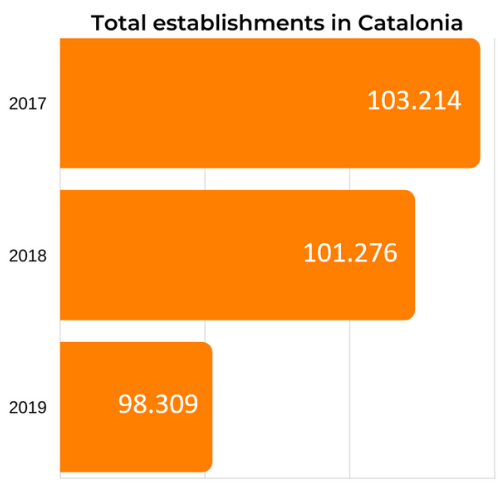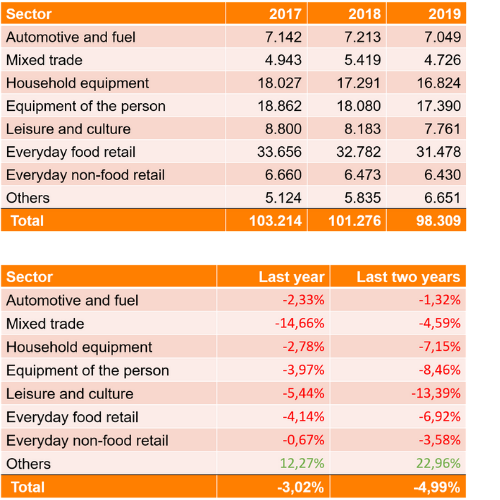
According to PIMEComerç, the number of establishments that have had to close in the last year is the 35% due to the lack of demand in recent months, and the little action to reduce fixed costs in shops (rent, fee self-employment, taxes, employees...).
This situation in which 35% of small businesses have been forced to close during the last year, merchants had been warning for a long time (Balaguer Televisión. 2020. [online]). Now, with the new restriction measures, it seems that if there is no quick reaction, this number of businesses forced to close will increase. Many of these businesses are waiting for the Christmas campaign to work to save their business, as the vice president of Barcelona Comerç, Pròsper Puig, pointed out. If they cannot reactivate their businesses during this period, much more stores will have to close.
But this decrease in local commerce is not something new and exclusive to the current health crisis, according to the Census of Commercial Establishments of Catalonia (CECC) of the Generalitat, this is a trend in recent years as we can see in the graph below.

Here, as we can see, the number of active establishments are falling year after year, having started in 2017 with 103,214 open spaces in Catalonia, to 98,309 in 2019, when Covid-19 had not yet affected businesses.
This is a general problem in all sectors, none of them have been favored in recent years. In the following table we can see the evolution in the last two years, and the negative trend of establishments occupied by small businesses in Catalonia.

This table makes us realize that the problem is not in a single sector, it is a global problem that affects any establishment regardless of the scope of its business.
With the latest restrictions on the closure of bars and restaurants, which although it may not seem like it, also influences shops because there are not so many people on the street to see your product, a joint solution is required for all these shops: digitization.
Faced with these new confinements and the new normality where it is tried to avoid social interactions as much as possible, influencing with less influx of people on the street and, therefore, with less visibility of small businesses, it is imperative to have a digital presence.
You have to change the influx of people in the physical sales channel to increase the influx of the digital channel.